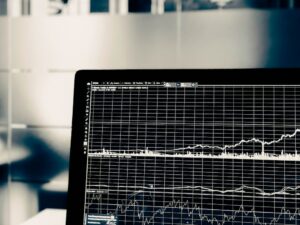How Technical Analysis Can Help Predict Forex Market Trends
The foreign exchange market, or forex, is the largest and most liquid financial market in the world. With trillions of dollars traded daily, it offers immense opportunities for investors and traders. However, navigating the forex market can be challenging, as it is highly volatile and subject to numerous factors that influence currency prices. To make informed trading decisions, many traders employ technical analysis, a method that uses historical price data and statistical indicators to predict future market trends.
Technical analysis is based on the belief that market prices reflect all available information and that historical price patterns can help predict future price movements. By studying charts and using various technical indicators, traders attempt to identify trends, support and resistance levels, and potential entry and exit points for trades.
One of the fundamental concepts in technical analysis is the idea of trend. A trend is the general direction in which a market or an asset is moving. Forex traders use trend lines, moving averages, and other tools to identify and confirm trends. By identifying the direction of the trend, traders can align their trades with the market’s momentum and increase their chances of success.
Support and resistance levels are another important aspect of technical analysis. Support is a price level at which demand for a currency is strong enough to prevent it from falling further. Resistance, on the other hand, is a price level at which supply is strong enough to prevent a currency from rising further. Traders use these levels to determine potential entry and exit points for their trades. When a currency reaches a support level, it may present a buying opportunity, while a resistance level may signal a selling opportunity.
Technical analysis also involves the use of various chart patterns, such as head and shoulders, double tops and bottoms, and triangles. These patterns can provide valuable insights into future price movements. For example, a head and shoulders pattern is often seen as a reversal pattern, indicating that a bullish trend may be ending and a bearish trend may be starting. By recognizing these patterns, traders can adjust their trading strategies accordingly and take advantage of potential market reversals.
In addition to chart patterns, technical analysts use a wide range of technical indicators to assist in their analysis. These indicators are mathematical calculations based on historical price data and can provide valuable information about market trends and potential trading opportunities. Popular indicators include moving averages, relative strength index (RSI), and MACD (Moving Average Convergence Divergence).
Moving averages are used to smooth out price fluctuations and identify trends. They are calculated by averaging a specific number of past price points. Traders often use moving averages to confirm trends or generate trading signals when the price crosses above or below a moving average line.
The RSI is a momentum oscillator that measures the speed and change of price movements. It ranges from 0 to 100 and is used to identify overbought and oversold conditions in the market. When the RSI is above 70, it is considered overbought, and when it is below 30, it is considered oversold. Traders use these levels to anticipate potential trend reversals.
The MACD is a trend-following momentum indicator that shows the relationship between two moving averages of a currency’s price. It consists of two lines, the MACD line and the signal line, as well as a histogram that represents the difference between the two lines. Traders use the MACD to identify potential buy and sell signals, as well as to confirm trend reversals.
While technical analysis can be a powerful tool in predicting forex market trends, it is important to note that it is not foolproof. It is based on historical data and assumptions about market behavior, and there are no guarantees that the future will follow the same patterns. Additionally, technical analysis should not be used in isolation but in conjunction with other forms of analysis, such as fundamental analysis, to make well-informed trading decisions.
In conclusion, technical analysis is a valuable tool for forex traders looking to predict market trends and make profitable trades. By analyzing historical price data, chart patterns, and technical indicators, traders can identify trends, support and resistance levels, and potential entry and exit points for their trades. However, it is important to remember that technical analysis is not infallible and should be used alongside other forms of analysis to make informed trading decisions.






